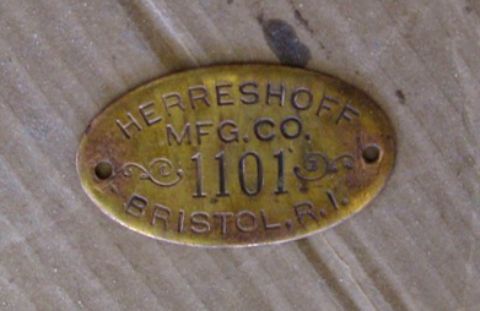From Planks to Lams
We don’t have to explain it the way Obi Wan explains The Force to young master Luke, but just the same, everything is tied together. Including traditional boatbuilding and carbon fiber lamination. For today’s take we drop into Thames Street, Newport, Rhode Island where . . .
Clark Poston is the Program Director at the International Yacht Restoration School, which graduated 31 students in June of 2010.
Those students came from either the two-year Boatbuilding and Restoration program or the one year Marine Systems program. Come 2011, there will be graduates also from the new, one-year Composites Technology program that launches in September.
There are no prerequisites to enter the Boatbuilding and Restoration track.
There are no prerequisites to enter the Composites Technology track.
Poston, however, believes there is good reason to start by learning plank on frame. I was taken by his passion for this, and I want to share, so here we go. Poston says, “People wonder why an ancient craft is relevant, but let me tell you, laminating a boat is a cakewalk compared to putting a garboard into a Concordia.
“Our students draw each boat full-size on the lofting floor, in three views—that proves the fairness—and then they draw it to scale. Then they move on to patterns for the transom, for example, that allow them to design the steering system.
“The student controls the shape through the lofting process. If you can’t get the lofting right, you’ll never get the boat. This translates to grp, metal, any material in boatbuilding. Ask any of our first-year students why they’re here, and I don’t think they will tell you that. But the people who graduated four or five years ago know it very well.”
“To prepare someone from point zero,” Poston says, “we have to have repetition. No one gets it on one time around. That’s why we have a two-year program, with progressively complex challenges.”
As we noted in our Part One story on IYRS, the second year also focuses upon estimating and bidding, with the aim of creating a successful professional. Poston says, “They learn that on any job, the labor is 4-5 times the cost of materials. We show them how to function in the real world, so they can build a profit margin into a contract. We force them to analyze why one guy’s estimating $60 thousand and another guy’s estimating $40 thousand for the same Herreshoff 12.5.”
 Boatbuilding and Restoration classes are taught at the signature IYRS facility on Thames Street in Newport, Rhode Island. Systems and Composites are located up the road in Bristol. (Systems including engines, gearing, electricals, pumps, tankage, LPG, firefighting, etc., to prepare students for American Boat and Yacht Council certification.)
Boatbuilding and Restoration classes are taught at the signature IYRS facility on Thames Street in Newport, Rhode Island. Systems and Composites are located up the road in Bristol. (Systems including engines, gearing, electricals, pumps, tankage, LPG, firefighting, etc., to prepare students for American Boat and Yacht Council certification.)
Expanding the range of offerings is part of a long-term strategy to make the school self-supporting, Poston says. The school was initially funded entirely by a few benefactors. Now it is 50 percent self-funded; the goal is to get to 100 percent, without, of course, imagining a time when generous benefactors will not be warmly appreciated. Poston figures it would take five or six effective programs “to develop a business model that would take over from philanthropy.”
Classes are taught by industry professionals. “We do teach people how to teach,” Poston says, “but if it’s the right person, there’s an inner teacher that just comes out.”
Poston observes a different mindset between the boatbuilding students and the systems students. “We teach a high level of craftsmanship,” he says. “The boatbuilding students are drawn by a passion. The systems people tend to be more concerned with how much they’re going to make when they get out.”
The International Yacht Restoration School presents its own story at IYRS.org
I DON’T CARE WHAT THEY DO AS LONG AS THEY DON’T DO IT IN THE STREET AND SCARE THE HORSES
I’ve heard rumors that somebody’s 16-year-old daughter was recently plucked off a dismasted but otherwise sound vessel in the Indian Ocean, short of her proposed circumnavigation.
Had there been no effort to commercialize the case, however unsuitable the timing and half a dozen other factors, I might have one outlook. But—
Sniff.


